Saturday, October 22, 2005
Were you there?
The rallying point for the Keith Noel 136 Committee's "death march" this morning was Independence Square at Chacon Street. Georgia and I left Diego Martin around 8.30, each with essential equipment: MP3 voice recorders, cameras, notebooks, bottles of water. ("Did you bring a handkerchief?" I asked her. To soak with water and put over your mouth and nose in case they use tear gas." I was joking, of course. Do the T&T police even have tear gas?)
We parked on Richmond Street, half a block up from Queen Street. There were small bunches of people wearing Keith Noel Committee t-shirts, carrying flags, walking down to Independence Square--middle-aged couples, families with small children. And many of them clearly middle-class or upper-middle-class. This was a worry for many people I spoke to: that the marchers this morning would be predominantly white, near-white, brown, and thus easily dismissable. But of course we were approaching Independence Square from the north-west, from the direction of Port of Spain's upper-middle-class suburbs--not surprising those were the people we saw walking down Richmond Street. We cut across to St. Vincent Street, walked past the Red House, the National Library, the Guardian offices. When we got to Independence Square and turned left, it was a different story. The Promenade was covered with people as far east as we could see, and the crowd looked like Trinidad.
Many people had come in groups--neighbourhood groups, professional groups. There were contingents from some of the trade unions--I saw Jennifer Baptiste, the president of the Public Services Association--and groups of employees from various firms. Many people held placards--some obviously mass-produced, some hand-made with idiosyncratic messages. One man bore a placard shaped like the island of Trinidad. It had a face, and it was weeping tears of blood.
We pressed through the crowd, seeing people we knew, friends, colleagues, nodding and shaking hands and kissing. A tassa side had begun playing--there was no music otherwise, the drums providing the beat for us to march to, sounding somehow solemn and at the same time hopeful. There was a look of patience and determination on many faces in the crowd, and a feeling of great expectation. Not many smiles. I was trying to estimate how many people were here. Four thousand specially made t-shirts had been sold, I'd read in the newspapers, and there were at least that many marchers, surely more. Later someone from TV6, experienced at estimating crowd numbers, told me he thought there were close to twenty thousand people.
Then, at someone's quiet word, the march began, led by a plain white banner with black letters--KEITH NOEL 136 COMMITTEE--and a group of people wearing blue t-shirts (blue was Keith Noel's favourite colour) and carrying large Trinidad and Tobago flags. From the foot of Nicholas Tower on the south side of Independence Square they turned onto Chacon Street and then onto the north side of the square, east past Cipriani's statue and the part-demolished Salvatori Building, and north again on Henry Street.
Other groups fell into formation behind banners or flags, and unattached people dressed in red or white or black joined in where they liked. There were marchers from the San Juan Business Association and the Blue Range Residents Association; from TSTT, Maritime Insurance, Beacon Insurance, McCann-Erickson; a vociferous contingent from Beaver Construction, dressed all in black; there were scouts from the First Trinidad Sea Scout Troop of St. Mary's College; a handful of drag queens in tight denim; the conservative Catholic Living Water Community; the Trinidad Hotels, Restaurants, and Tourism Association; at the very rear of the procession, the Hunters Association of Trinidad and Tobago, and someone with a large rainbow-striped umbrella blazoned "Save the Forests".
I saw at least one nun, and Rev. Cyril Paul, the former Presbyterian moderator. I saw two MPs, Gillian Lucky and Gerald Yetming. I saw Independent Senator Angela Cropper, and former senator Julian Kenny. I saw Martin Daly, wearing a black beret with a red star. I saw fashion designers, jewellers, dancers, artists, TV producers, and many photographers documenting the march. I saw the proprietors of a French restaurant in Woodbrook, and two elderly ladies in red t-shirts walking very slowly and pausing every now and then for a rest. I saw writer B.C. Pires and his wife Carla on bicycles. I saw Arthur Lok Jack, the new chairman of BWIA. The family of Eddie Koury, kidnapped and beheaded last month, were there, dressed in black and holding white roses, some of the women weeping discreetly. But not Koury's uncle John Rahael, the minister of health, because members of the PNM were banned from joining the march.
As we walked up Henry Street and across Duke Street, I snapped many photos, and Georgia interviewed people from the crowd--a woman who said she was there because threats had been made against her son; Nicola Cross, who spoke about the long-unsolved death of Akiel Chambers. Chants broke out occasionally--no more guns, no more crime--but most people walked quietly, or chatted with their companions. I kept thinking the closest thing to this that I'd experienced was Carnival, but it was nothing like Carnival. I didn't expect to feel so moved--by the sight of two men bearing placards with photographs of a murdered friend, or simply by the sight of so many people angry enough to march in the hot Saturday morning sun, not an easy thing to ask of Trinidadians, especially Trinidadians of the middle classes.
The procession turned down Frederick Street, back across Independence Square, up Abercromby Street. Georgia and I tried to get closer to the front, to see what was happening. The top of the procession had reached Woodford Square now, and the ceremony outside the Red House had begun. I pushed through the crowd. Three hundred volunteers, representing the year's tally (thus far) of murder victims, were dressed in white, their heads covered with black hoods. One by one they lay down on a long sheet of red cloth, stretching up Abercromby Street; their wrists were bound by a single strip of red cloth. Then one by one they got up again, and removed their hoods. People began squeezing into Woodford Square.
We saw the photographer Alex Smailes; he'd got a better look at the ceremony, the crowd parting for his camera. Alex spent years covering war zones for a French photo agency--former Soviet republics, Haiti. This feeling today, he said, was familiar to him, the feeling of a revolution beginning, the first rumbling emerging as from beneath the earth.
Georgia was interviewing two women; one said she was 65, the other didn't say her age. They'd both volunteered to participate in the ceremony; they still had their black hoods in their hands. They'd turned up at Independence Square this morning, alone, and fallen in together; they'd never met before, but now they were referring to each other as "my friend". I had to come, the first woman said. My children didn't want me to, but I took public transport and came. I moved back here from New York three years ago; I can't believe what's happening in my country, the place I spent years longing to come back to. The other woman held up a sign she'd made with brown paper and ballpoint pen: WHAT WE GOING TO DO WITH THESE / THE GOVERNMENT / PRESSURE THEM 'TIL WE GET AH EASE!!! / (WITH CRIME)
The Beaver Construction group came up the street behind us, singing and dancing, waving their placards. We crossed into the square. It was approaching noon by now, the sun blazing. I hadn't thought to put on sunblock, and forgot I had a hat in my knapsack. By afternoon my face and neck were sunburnt, my head aching.
People were setting up microphones on the Woodford Square bandstand, and meanwhile a DJ was playing patriotic calypsos; when Sniper's "Portrait of Trinidad" began, people all around began mouthing the words as they walked and stood and bought snow-cones from the vendors dotted across the grass. Finally someone announced that we should face the Red House for the National Anthem, and the notes began on a tenor pan. I couldn't resist breaking the regulation at-attention stance to photograph the crowd all facing west, motionless.
Stephen Cadiz, the chairman of the Keith Noel Committee, made the first speech. To look at him, there is nothing remarkable--medium height, slightly portly, bespectacled, bearded. He speaks in a French Creole accent and has a French Creole assurance that some may take for arrogance. People's feelings about the Keith Noel Committee, I suspect, are heavily coloured by their impressions of Cadiz, this white Trinidadian who says he is apolitical but who has orchestrated one of the major political statements in the country's recent history. Most Trinidadians don't even know how to pronounce his name--CAY-diss--unless they are French Creole themselves. It's a clear U-and-non-U marker.
He spoke forcefully and concisely, and was followed by Wayne Chance, the ex-convict, and Christine Hosein, whose son was kidnapped (and managed to escape) in April. Then the performers came on: Abbi Blackman, Brother Resistance, 3Canal. Those in the crowd who intended to stay on for the music settled in, found patches of shade or opened umbrellas, drank free Gatorade. There were dozens of TV6 reporters and crew in a cordoned-off area behind the bandstand. The sun blazed.
A nervous-looking young man was handing round flyers from the Federation of Independent Trade Unions and NGOs, or FITUN--a group I'd never heard of. "Admit where we went wrong", it read. "Build a society based on justice and equal opportunity for all."
"Both traditional political parties have engaged in the deadly game of sleeping with the 'devil' in the form of gang leaders and the so-called 'bad-boys' in order to win elections. This has given the gang leaders and bad boys legitimacy that then makes them believe that they can act with impunity.... The business organisations are guilty of calling for action against crime but yet stay silent on the fact that amongst their ranks--masquerading as respectable business-people--are the importers and exporters of drugs and the money launderers. They have been given legitimacy. Some even finance the political parties.... The Chambers of Commerce are silent on this." Fix the education system, the flyer argued, reform the prisons, overhaul the justice system.
When 3Canal performed "Talk Yuh Talk", denouncing the "mocking pretenders", they pointed across at the Red House, which today was a symbol both of the ideals we were marching for--democracy and freedom--and of the forces we were marching against--the greed and selfishness of the politicians who have turned the House of Representatives into a pappyshow and clawed their way to power through our fraying social fabric. The last person Georgia interviewed before we left Woodford Square was Stephen Cadiz. He was in a hurry, attending to some small urgent matter, but he stopped and spoke for a minute into her microphone. What next? Georgia asked. We're hoping that today's march will send a message, Cadiz said, will make a difference, that things will change.
But the person who needs most urgently to act right now, I thought--the person who is constitutionally empowered and obliged to deal with the crisis of crime that is traumatising the country--is the prime minister, and Mr. Manning made it clear two days ago that today's march, the perhaps twenty thousand people who tried to send a message in Port of Spain, the one hundred thousand who have tried to send a message through the Keith Noel petition, that all these people and their angry and frustrated cries are of no consequence to him. Why think Mr. Manning even bothered to watch the coverage of the march on TV today, or will bother to read about it in the newspapers tomorrow?
"He promise the fire next time, he promise the fire next time, he promise, he promise, he promise, he promise, he promise the fire next time, and who ent dead badly wounded, who ent dead badly wounded...."
We left Woodford Square at nearly 2.00 p.m., tired and hungry, and walked up Abercromby Street to the little Italian restaurant just below Park Street. We met two friends there, and had a late lunch. And another day I'll try to figure out what this all means.
The rallying point for the Keith Noel 136 Committee's "death march" this morning was Independence Square at Chacon Street. Georgia and I left Diego Martin around 8.30, each with essential equipment: MP3 voice recorders, cameras, notebooks, bottles of water. ("Did you bring a handkerchief?" I asked her. To soak with water and put over your mouth and nose in case they use tear gas." I was joking, of course. Do the T&T police even have tear gas?)
We parked on Richmond Street, half a block up from Queen Street. There were small bunches of people wearing Keith Noel Committee t-shirts, carrying flags, walking down to Independence Square--middle-aged couples, families with small children. And many of them clearly middle-class or upper-middle-class. This was a worry for many people I spoke to: that the marchers this morning would be predominantly white, near-white, brown, and thus easily dismissable. But of course we were approaching Independence Square from the north-west, from the direction of Port of Spain's upper-middle-class suburbs--not surprising those were the people we saw walking down Richmond Street. We cut across to St. Vincent Street, walked past the Red House, the National Library, the Guardian offices. When we got to Independence Square and turned left, it was a different story. The Promenade was covered with people as far east as we could see, and the crowd looked like Trinidad.
Many people had come in groups--neighbourhood groups, professional groups. There were contingents from some of the trade unions--I saw Jennifer Baptiste, the president of the Public Services Association--and groups of employees from various firms. Many people held placards--some obviously mass-produced, some hand-made with idiosyncratic messages. One man bore a placard shaped like the island of Trinidad. It had a face, and it was weeping tears of blood.
We pressed through the crowd, seeing people we knew, friends, colleagues, nodding and shaking hands and kissing. A tassa side had begun playing--there was no music otherwise, the drums providing the beat for us to march to, sounding somehow solemn and at the same time hopeful. There was a look of patience and determination on many faces in the crowd, and a feeling of great expectation. Not many smiles. I was trying to estimate how many people were here. Four thousand specially made t-shirts had been sold, I'd read in the newspapers, and there were at least that many marchers, surely more. Later someone from TV6, experienced at estimating crowd numbers, told me he thought there were close to twenty thousand people.
Then, at someone's quiet word, the march began, led by a plain white banner with black letters--KEITH NOEL 136 COMMITTEE--and a group of people wearing blue t-shirts (blue was Keith Noel's favourite colour) and carrying large Trinidad and Tobago flags. From the foot of Nicholas Tower on the south side of Independence Square they turned onto Chacon Street and then onto the north side of the square, east past Cipriani's statue and the part-demolished Salvatori Building, and north again on Henry Street.
Other groups fell into formation behind banners or flags, and unattached people dressed in red or white or black joined in where they liked. There were marchers from the San Juan Business Association and the Blue Range Residents Association; from TSTT, Maritime Insurance, Beacon Insurance, McCann-Erickson; a vociferous contingent from Beaver Construction, dressed all in black; there were scouts from the First Trinidad Sea Scout Troop of St. Mary's College; a handful of drag queens in tight denim; the conservative Catholic Living Water Community; the Trinidad Hotels, Restaurants, and Tourism Association; at the very rear of the procession, the Hunters Association of Trinidad and Tobago, and someone with a large rainbow-striped umbrella blazoned "Save the Forests".
I saw at least one nun, and Rev. Cyril Paul, the former Presbyterian moderator. I saw two MPs, Gillian Lucky and Gerald Yetming. I saw Independent Senator Angela Cropper, and former senator Julian Kenny. I saw Martin Daly, wearing a black beret with a red star. I saw fashion designers, jewellers, dancers, artists, TV producers, and many photographers documenting the march. I saw the proprietors of a French restaurant in Woodbrook, and two elderly ladies in red t-shirts walking very slowly and pausing every now and then for a rest. I saw writer B.C. Pires and his wife Carla on bicycles. I saw Arthur Lok Jack, the new chairman of BWIA. The family of Eddie Koury, kidnapped and beheaded last month, were there, dressed in black and holding white roses, some of the women weeping discreetly. But not Koury's uncle John Rahael, the minister of health, because members of the PNM were banned from joining the march.
As we walked up Henry Street and across Duke Street, I snapped many photos, and Georgia interviewed people from the crowd--a woman who said she was there because threats had been made against her son; Nicola Cross, who spoke about the long-unsolved death of Akiel Chambers. Chants broke out occasionally--no more guns, no more crime--but most people walked quietly, or chatted with their companions. I kept thinking the closest thing to this that I'd experienced was Carnival, but it was nothing like Carnival. I didn't expect to feel so moved--by the sight of two men bearing placards with photographs of a murdered friend, or simply by the sight of so many people angry enough to march in the hot Saturday morning sun, not an easy thing to ask of Trinidadians, especially Trinidadians of the middle classes.
The procession turned down Frederick Street, back across Independence Square, up Abercromby Street. Georgia and I tried to get closer to the front, to see what was happening. The top of the procession had reached Woodford Square now, and the ceremony outside the Red House had begun. I pushed through the crowd. Three hundred volunteers, representing the year's tally (thus far) of murder victims, were dressed in white, their heads covered with black hoods. One by one they lay down on a long sheet of red cloth, stretching up Abercromby Street; their wrists were bound by a single strip of red cloth. Then one by one they got up again, and removed their hoods. People began squeezing into Woodford Square.
We saw the photographer Alex Smailes; he'd got a better look at the ceremony, the crowd parting for his camera. Alex spent years covering war zones for a French photo agency--former Soviet republics, Haiti. This feeling today, he said, was familiar to him, the feeling of a revolution beginning, the first rumbling emerging as from beneath the earth.
Georgia was interviewing two women; one said she was 65, the other didn't say her age. They'd both volunteered to participate in the ceremony; they still had their black hoods in their hands. They'd turned up at Independence Square this morning, alone, and fallen in together; they'd never met before, but now they were referring to each other as "my friend". I had to come, the first woman said. My children didn't want me to, but I took public transport and came. I moved back here from New York three years ago; I can't believe what's happening in my country, the place I spent years longing to come back to. The other woman held up a sign she'd made with brown paper and ballpoint pen: WHAT WE GOING TO DO WITH THESE / THE GOVERNMENT / PRESSURE THEM 'TIL WE GET AH EASE!!! / (WITH CRIME)
The Beaver Construction group came up the street behind us, singing and dancing, waving their placards. We crossed into the square. It was approaching noon by now, the sun blazing. I hadn't thought to put on sunblock, and forgot I had a hat in my knapsack. By afternoon my face and neck were sunburnt, my head aching.
People were setting up microphones on the Woodford Square bandstand, and meanwhile a DJ was playing patriotic calypsos; when Sniper's "Portrait of Trinidad" began, people all around began mouthing the words as they walked and stood and bought snow-cones from the vendors dotted across the grass. Finally someone announced that we should face the Red House for the National Anthem, and the notes began on a tenor pan. I couldn't resist breaking the regulation at-attention stance to photograph the crowd all facing west, motionless.
Stephen Cadiz, the chairman of the Keith Noel Committee, made the first speech. To look at him, there is nothing remarkable--medium height, slightly portly, bespectacled, bearded. He speaks in a French Creole accent and has a French Creole assurance that some may take for arrogance. People's feelings about the Keith Noel Committee, I suspect, are heavily coloured by their impressions of Cadiz, this white Trinidadian who says he is apolitical but who has orchestrated one of the major political statements in the country's recent history. Most Trinidadians don't even know how to pronounce his name--CAY-diss--unless they are French Creole themselves. It's a clear U-and-non-U marker.
He spoke forcefully and concisely, and was followed by Wayne Chance, the ex-convict, and Christine Hosein, whose son was kidnapped (and managed to escape) in April. Then the performers came on: Abbi Blackman, Brother Resistance, 3Canal. Those in the crowd who intended to stay on for the music settled in, found patches of shade or opened umbrellas, drank free Gatorade. There were dozens of TV6 reporters and crew in a cordoned-off area behind the bandstand. The sun blazed.
A nervous-looking young man was handing round flyers from the Federation of Independent Trade Unions and NGOs, or FITUN--a group I'd never heard of. "Admit where we went wrong", it read. "Build a society based on justice and equal opportunity for all."
"Both traditional political parties have engaged in the deadly game of sleeping with the 'devil' in the form of gang leaders and the so-called 'bad-boys' in order to win elections. This has given the gang leaders and bad boys legitimacy that then makes them believe that they can act with impunity.... The business organisations are guilty of calling for action against crime but yet stay silent on the fact that amongst their ranks--masquerading as respectable business-people--are the importers and exporters of drugs and the money launderers. They have been given legitimacy. Some even finance the political parties.... The Chambers of Commerce are silent on this." Fix the education system, the flyer argued, reform the prisons, overhaul the justice system.
When 3Canal performed "Talk Yuh Talk", denouncing the "mocking pretenders", they pointed across at the Red House, which today was a symbol both of the ideals we were marching for--democracy and freedom--and of the forces we were marching against--the greed and selfishness of the politicians who have turned the House of Representatives into a pappyshow and clawed their way to power through our fraying social fabric. The last person Georgia interviewed before we left Woodford Square was Stephen Cadiz. He was in a hurry, attending to some small urgent matter, but he stopped and spoke for a minute into her microphone. What next? Georgia asked. We're hoping that today's march will send a message, Cadiz said, will make a difference, that things will change.
But the person who needs most urgently to act right now, I thought--the person who is constitutionally empowered and obliged to deal with the crisis of crime that is traumatising the country--is the prime minister, and Mr. Manning made it clear two days ago that today's march, the perhaps twenty thousand people who tried to send a message in Port of Spain, the one hundred thousand who have tried to send a message through the Keith Noel petition, that all these people and their angry and frustrated cries are of no consequence to him. Why think Mr. Manning even bothered to watch the coverage of the march on TV today, or will bother to read about it in the newspapers tomorrow?
"He promise the fire next time, he promise the fire next time, he promise, he promise, he promise, he promise, he promise the fire next time, and who ent dead badly wounded, who ent dead badly wounded...."
We left Woodford Square at nearly 2.00 p.m., tired and hungry, and walked up Abercromby Street to the little Italian restaurant just below Park Street. We met two friends there, and had a late lunch. And another day I'll try to figure out what this all means.
Subscribe to:
Post Comments (Atom)

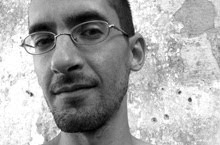


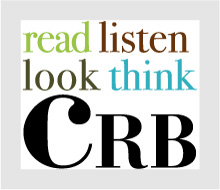
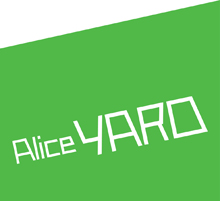
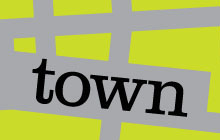

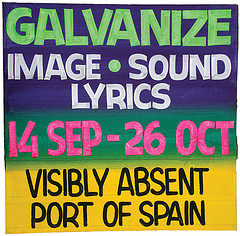
No comments:
Post a Comment